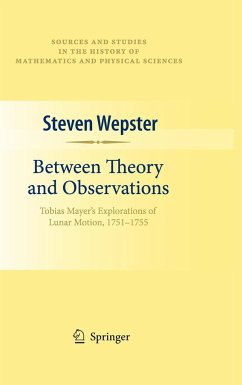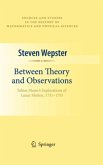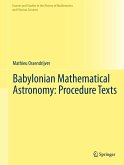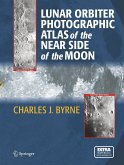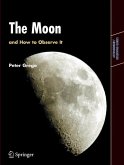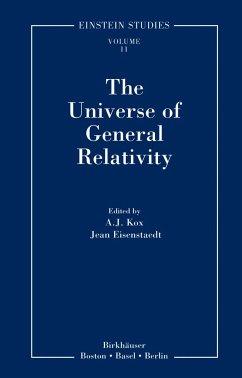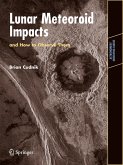In the 18th century purely scientific interests as well as the practical necessities of navigation motivated the development of new theories and techniques to accurately describe celestial and lunar motion. Tobias Mayer, a German mathematician and astronomer, was among the most notable scientists of the time in the area of lunar theory.
"Between Theory and Observations" presents a detailed and rigorous account of Tobias Mayer's work; his famous contribution is his extensive set of lunar tables, which were the most accurate of their time. This book gives a complete and accurate account, not to be found elsewhere in the literature, of Tobias Mayer's important contributions to the study of lunar motion.
The book highlights and examines three of Mayer's major achievements:
- The computational scheme embodied in Mayer's lunar tables is examined and traced back to the scheme of Newton's 1702 lunar theory with its decidedly non-dynamical characteristics.
- Mayer's dynamical lunar theory is compared to Euler's work in celestial mechanics of the same period. Evidence is presented refuting the commonly held opinion that Mayer's lunar theory was simply a modification of Euler's theory.
- Mayer's technique of adjusting the coefficients of his lunar tables to fit an extensive collection of observational data is examined in detail. The scale of Mayer's effort was unprecedented and preceded the invention of the least squares method by half a century.
This volume is intended for historians of mathematics and/or astronomy as well as anyone interested in the historical development of the theory of lunar motion.
"Between Theory and Observations" presents a detailed and rigorous account of Tobias Mayer's work; his famous contribution is his extensive set of lunar tables, which were the most accurate of their time. This book gives a complete and accurate account, not to be found elsewhere in the literature, of Tobias Mayer's important contributions to the study of lunar motion.
The book highlights and examines three of Mayer's major achievements:
- The computational scheme embodied in Mayer's lunar tables is examined and traced back to the scheme of Newton's 1702 lunar theory with its decidedly non-dynamical characteristics.
- Mayer's dynamical lunar theory is compared to Euler's work in celestial mechanics of the same period. Evidence is presented refuting the commonly held opinion that Mayer's lunar theory was simply a modification of Euler's theory.
- Mayer's technique of adjusting the coefficients of his lunar tables to fit an extensive collection of observational data is examined in detail. The scale of Mayer's effort was unprecedented and preceded the invention of the least squares method by half a century.
This volume is intended for historians of mathematics and/or astronomy as well as anyone interested in the historical development of the theory of lunar motion.
From the reviews: "Tobias Mayer, whose work on lunar motion is the subject of this book by Steven Wepster ... . Wepster provides evidence to show that his work on lunar tables is also based upon Newton's attempts. ... I think that the only way to gain insight into the intricacies of his lunar tables is to study this unique and interesting book. ... of interest to historians of mathematics and astronomers. ... no other book that researches this topic so thoroughly as this one by Stephen Wepster." (Peter Ruane, The Mathematical Association of America, May, 2010) "The present study investigates the evolution of Tobias Mayer's lunar theory and tables. ... Mayer's technique of adjusting the coefficients of his lunar tables to fit an extensive collection of observational data is examined in detail, and it is clear that his efforts were unprecedented. This volume will be warmly welcomed not only by those who are interested in the historical development of the theory of lunar motion but also by historians of mathematics and astronomy." (William R. Shea, Mathematical Reviews, Issue 2010 j)

